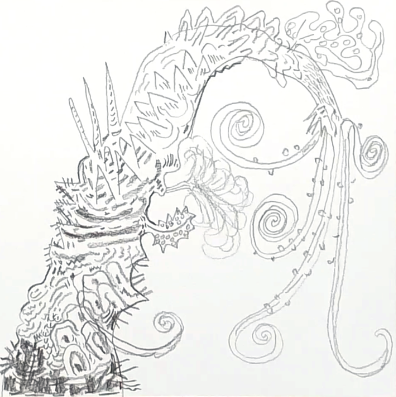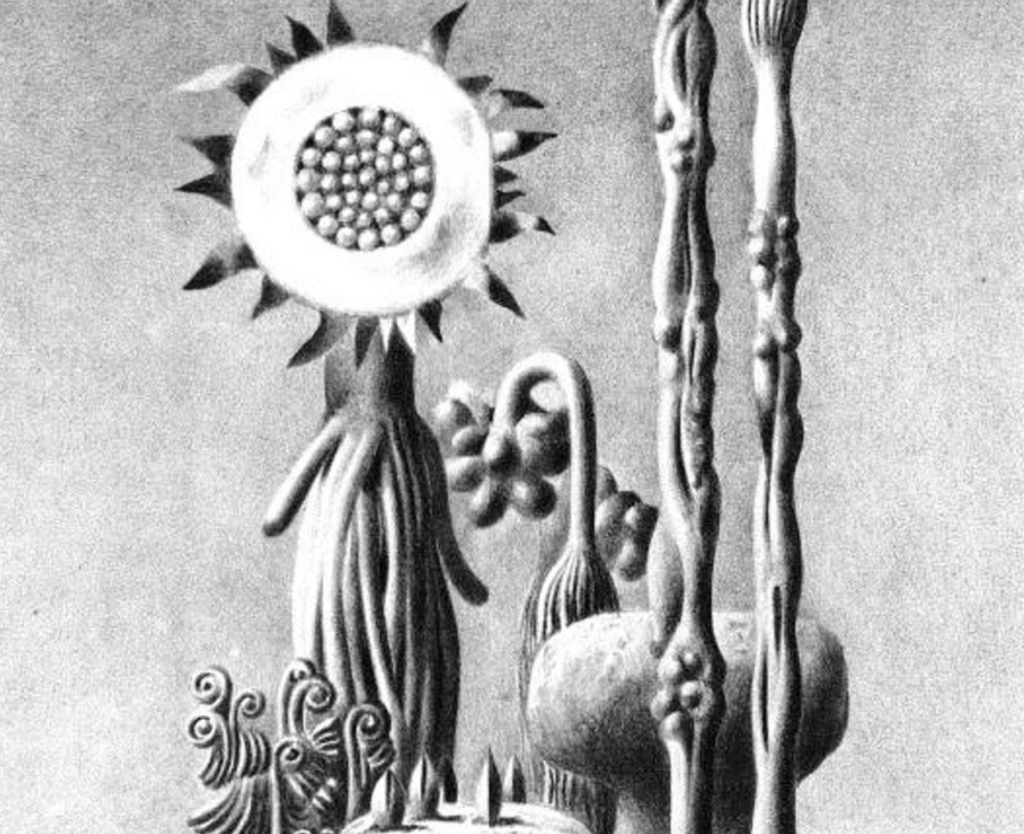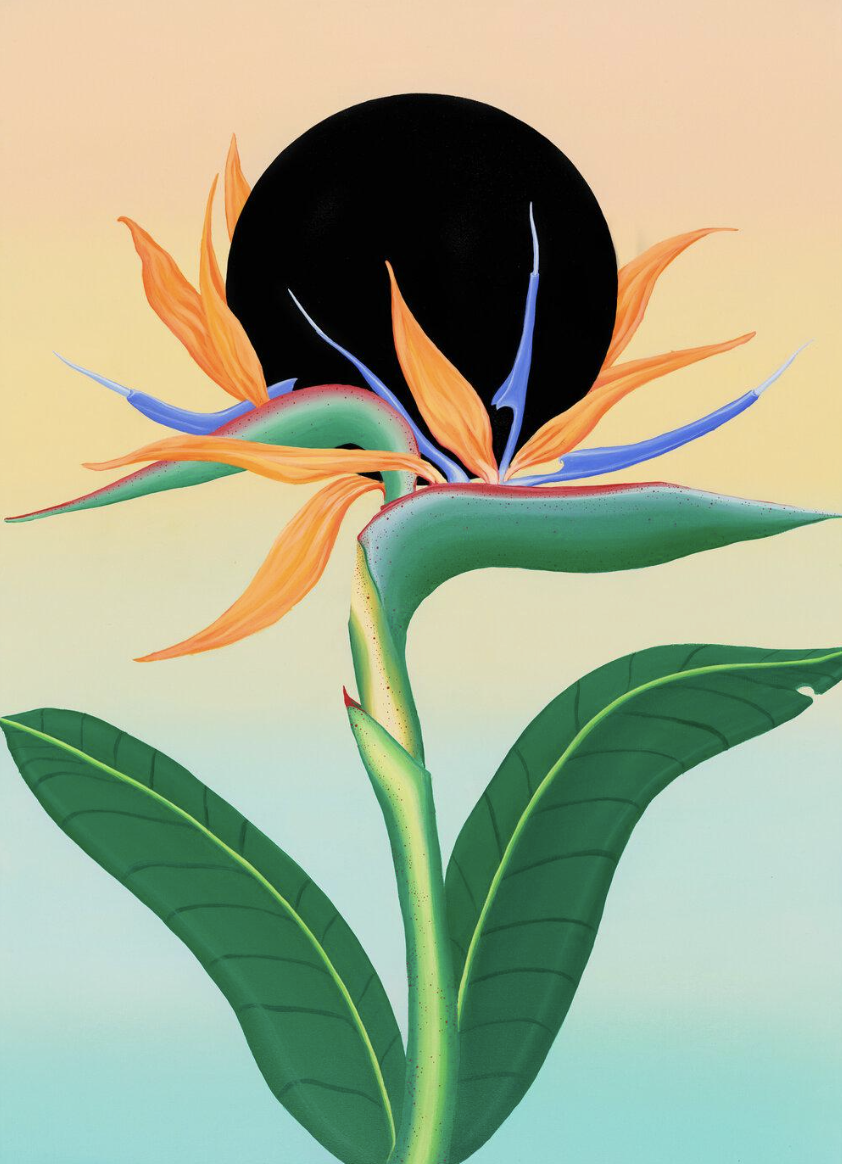Overview
Students will reflect on their artmaking using the close looking, speaking, writing, and/or sketchbook prompts.
Materials and Tools
- Pencil
- Sketchbook or 1 piece of paper
- Drawing from the previous lesson
Activities
Note: The following activities are written with sample language you may use with your students. Following the art-making lesson, you may choose as many reflection activities as desired for students to work on in class or independently.
Explain to students that the slides they see during the lesson will be shared with them so they may review the lesson on their own and continue to make more art.
Step 1: Introduction and close looking at student work (5 minutes)
Hello Artists! Today we are going to reflect on our drawings of imaginary plants.
Look closely at your imaginary plant drawing and describe it to a partner:

- What distinct features does your plant have?
- Use your senses to describe it. How does it smell, sound, taste, look or feel?
- What can your plant do?
- What will you name your plant? Why will you give it that name?
- What kind of place do you imagine your plant growing in?
Step 2: Writing Activity (10 minutes)
Now we are going to write about your drawing. Imagine that you are a scientist and you have just discovered your plant. Write a news report introducing your new plant to the world!
Use the following prompts to write about your plant:
- What is your plant’s name?
- What are this plant’s distinctive features?
- What do these features allow the plant to do?
- How does your plant smell?
- What size is your plant?
- Where was your plant found?
Based on your students’ writing skills, choose from the options below.
Option 1: Write sentences to answer the questions above.
For example:
- This plant’s name is wild dragon unfurling.
- This plant’s distinctive features are its curved shape, its spiraling tendrils and its leaves that look like wings.
- These features allow the plant to stretch out and reach towards water and food.
- This plant smells sour.
- This plant is as tall as a human.
- This plant was found on the planet Mars.
Option 2: Use the sentence frames and vocabulary list below to write about your artwork.
My plant’s name is _____________________.
This plant’s distinctive features are _____________ and _____________.
These features allow the plant to _____________.
This plant smells _____________.
The size of this plant is _____________.
This plant was found _____________.
Step 3: Sketchbook Activity (10-15 minutes)
Now that you’ve written about your plant and introduced it to the world, let’s create a drawing of your plant to go with your news report!
Think about the location of your plant.

- Where do you imagine your plant grows? What is the environment like?
- Does your plant grow in a city or in the mountains? On a rooftop? In outer space?
Draw your imaginary plant again in your sketchbook, but this time zoom out and draw your plant in the environment it grows in. Think about the distinctive features and textures of your plant, and how you used lines, shapes and patterns.
Model drawing your plant, then draw a location/environment around it. Ask students to help brainstorm location features.
Resources


Check out the imaginary plants of artist Se Jong Cho in her “Botanical Eclipse” series: https://sejongee.com/eclipse-infinite-ending

